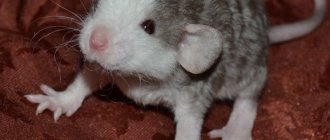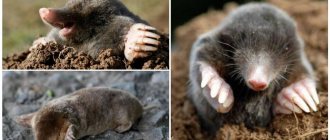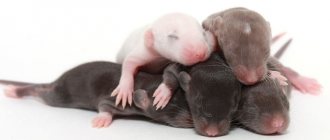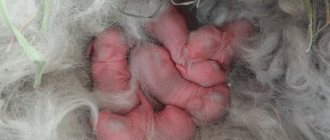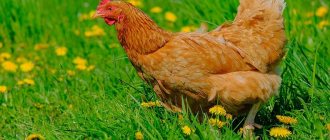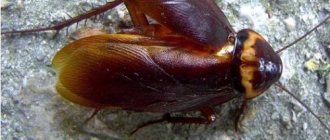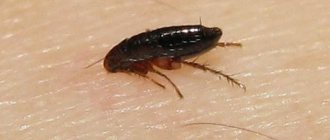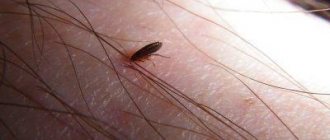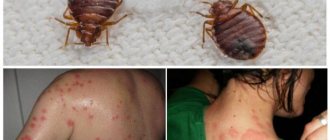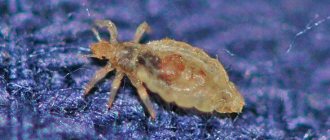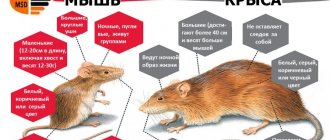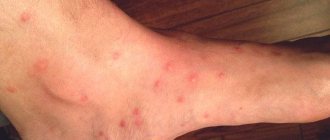A baby rat is born completely helpless. All he can do is suck the female’s milk. But within 3 weeks, the tiny creatures become independent animals, ready for the full life of a rodent. The baby rats in the photo at different ages allow you to see the rapid growth trend of the animal, significant transformations every day.
Rodent development stages
Who is better to have: a boy or a girl?
All decorative rats are sociable, unpretentious, smart and easy to train.
When choosing a pet, you should take into account its character and the temperament of the owner. Most boys are phlegmatic, most of the time they rest in their house, hammock or in the arms of their owner. They sleep much more often than girls, eat more, and move less.
From 6–8 months, boys experience hormonal changes. This is manifested by bursts of unreasonable aggression towards relatives and the owner. You need to be prepared for this. In addition, males mark territory and people for whom they feel sympathy. Their urine has an unpleasant, pungent odor that is difficult to get rid of. For this reason, their cage has to be cleaned more often than the females’ home.
Rat girls are more active and restless. They bite owners more often than boys. Pregnant or recently given birth females who protect their offspring are especially aggressive.
Female rats also mark their territory, but much less often than male rats. In addition, their urine does not have such a strong odor.
Rats of both sexes are more active at night and sleep during the day. Therefore, the owner must accustom them to their schedule: games in the evening, sleep at night.
Interesting! The activity of female rats depends on hormonal levels. They are almost constantly in heat; their estrus occurs at intervals of 5–10 days and lasts 14–24 hours.
Males get along better with other pets than females.
Experienced breeders strongly recommend keeping rats in groups (from 2 individuals). They need communication with their relatives for a full life and good health. Solitary confinement does not suit them.
How else can you tell the difference between a female and a male? Indirect signs
In addition to differences in reproductive organs, male and female rats typically differ in body size and type, behavior, smell, and other factors.
In general, males are larger, wider and heavier, with thicker tails and coarser coats. They have broad heads and shoulders that have a “brick” shape.
Adult males usually weigh from 300 to 800 g, and females from 250 to 500 g.
However, some pet rats can weigh even more than this.
Male rats often become more accustomed to human affection than female rats, who tend to do so later in life.
Most female rats prefer to move around a lot rather than sit still, but not all male rats share this trait.
Male rats can certainly be calm and relaxed, but that doesn't make them lazy. Almost all rats, given a lot of attention from birth, will enjoy time with their people and the touch we often want to share with them.
Women's hormonal cycles can sometimes affect their behavior, making them more restless and even irritable. However, many females show almost no signs of estrus and yet remain alert.
Female rats reach sexual maturity at the age of 34 to 38 days, and males slightly later - from 39 to 47 days.
Menopause in females occurs between 15 and 18 months, although some females remain fertile into old age. Males are capable of constantly reproducing offspring until old age. They do not have a reproductive cycle, but their testosterone levels fluctuate greatly.
Male rats have a musky odor, while female rats smell like grapes.
Sex hormones are also associated with the slightly musky odor that many males have (not heavy or unpleasant). People often describe their female rats as smelling like grapes, perfume, or even popcorn. This is the smell of the rats themselves, not their cage - most likely it is the smell of urine or feces.
We humans are individuals too, and we all look for different traits and characteristics in the animals we choose as pets. So, regardless of gender, your rats can be active, interesting and affectionate companions.
What do newborn rat pups look like?
The decorative rat bears its cubs for 20-26 days, the period depends on the size of the litter. There are from 2 to 9 babies in one litter.
Newborn rat pups look completely helpless. They are born naked, blind and deaf, with underdeveloped limbs and a very short tail.
Rats can only move their paws and open their mouths. Despite their helplessness, babies are able to find the only available source of nutrition, the mother's nipple, by smell.
At birth, a small rat weighs 4-6 g. If the litter is large, then it contains cubs weighing 3 g. The body length of a newly born rodent depends on the sex and is 5-9 cm. Boys are usually larger than girls.
Newborn rodents have pink, thin skin. Blood vessels and internal organs are visible through it.
Life cycle
On average, ordinary gray rats live about 3-5 years. Larger black individuals are 4-6 years old. The lifespan of mice is 3 years. Both are extremely fertile, and the family is growing by leaps and bounds.
Pregnancy in rats proceeds very quickly - about 24 days, and in mice about 18. There are more than 10 individuals in one litter. There may be 7-10 cases of pregnancy per year. So they gain numbers with amazing speed, especially in favorable conditions: a good climate and constant access to food.
Interesting and educational facts about the life of rats
In India there is a Karni Mata temple where rats are revered, cared for and protected. If the rules for caring for a sacred animal and killing it are violated, this person is obliged to bring a golden figurine in the form of a rat to the temple.
In some American states, it is illegal to hit a rat with a baseball bat and can result in a $1,000 fine.
In Asian and African countries, rats are considered a worthy delicacy for a festive dinner. Rat meat is considered a delicacy.
A gray rat eats up to 12 kg of various cereal products per year. Experts have calculated that every year about 6 kg of one farmer’s harvest is spent on feeding one rat.
Reproduction
The Siamese color gene is recessive. This means the following: cubs with this color will be obtained only if both partners have this color.
The process of breeding Siamese rats at home is simple. To get healthy, beautiful offspring, you must adhere to the following rules.
- For mating, rats older than 3 months must be selected. The selected pair must be placed in a cage for several days.
- Pregnancy lasts a maximum of 24 days. The expectant mother should eat well; protein foods must be included in the diet.
- Bloody discharge and the animal's desire for privacy may indicate that labor is approaching.
- From 8 to 18 rat pups can be born. Females are good mothers; they surround their offspring with love and care.
- While the female feeds and cares for her cubs, they cannot be handled. Otherwise, she may refuse them.
- The cage should always be kept clean and practically sterile.
Watch the video below for all about caring for pet rats.
Appearance of the rat, description and characteristics
The body of the rat is oval-shaped and stocky. The body of the animal is from 8 cm to 30 cm, weighing up to 500 g, there are small ones weighing 37 grams.
The eyes and ears are small, the muzzle is sharp and elongated. Is the tail longer than the size of the rat's body, hairless or covered with fine hair? invisible to the human eye (a type of black rat has a tail with a thick coat of fur). There is a species of short-tailed rodents in the world.
A rat's teeth are arranged tightly together in rows and are designed for chewing food. These animals are omnivores; they differ from other predators in the absence of fangs and diastema - this is an area on the gums where there are no teeth.
There are no dental roots, so growth occurs continuously throughout the rat's life. For convenience, they need to constantly grind down their teeth, otherwise she will not be able to close her mouth.
The teeth are strong with hard yellow enamel, which makes it possible to easily chew through concrete, cement and hard various metals.
The rodent's body is covered with a thick, dense coat of guard hairs. The color range is varied, gray with different shades of dark or light, red, orange and even yellow.
These amazing animals have movable toes on their paws, so they easily climb trees and prepare nests in hollows for habitat.
Rats are very active and agile animals, running 17 km a day and jumping up to 1 meter in height. They swim well, are not afraid of water and can catch fish.
Rats often turn their heads in different directions because they have a small viewing angle and see the world around them in gray tones.
Hearing functions perfectly, rats distinguish sounds with a frequency of up to 40 kHz (humans up to 20 kHz).
Life expectancy is from 1 year to 3 years. In laboratory conditions, rats can live 2 times longer.
Coat color
There is a wide variety of colors and coat tones for decorative types of rats. Based on this criterion, they are divided into groups.
Homogeneous
With uniform coat color in decorative rats, all hairs should look the same and be the same color.
The following colors are available:
- black;
- white (albinos);
- Russian blue and smoky blue, which differ only in the intensity of the tone;
- brown-gray;
- platinum;
- beige;
- champagne
There are several types of light gray color:
- with a blue tint (Russian silver);
- with a pink tint (dav);
- with a chestnut tint (lilac);
The name of the color is also determined by the color of the eyes. For example, rats with champagne coat colors should have pink eyes. And in white decorative rodents they are red and black.
Ticked
Each fur of such a rat is colored in several colors:
- Agouti. The basis of the classic color is soft brown hairs with black tips. A silver-gray tone predominates on the belly. Blue agouti is characterized by a combination of brown with silver or cool blue color. The platinum agouti has light gray and beige hairs that are effectively complemented by a blue tint.
- Amber. An ivory band is visible on the orange and fiery yellow hairs. The undercoat is a delicate cream color, the eyes are pink.
- Cinnamon. On the back, red-brown hairs with a bright golden edging predominate, and on the belly, gray and silver hairs predominate.
- Faun. The predominance of coffee-golden color, the silvery tint to which is given by guard hairs. The fur in the belly area is silver-cream in color. Fauns have dark ruby eyes.
- Topaz. Light coffee hairs are combined with silver ones. In color, these rats resemble fauns, but have a lighter shade of undercoat, due to which the entire color of the coat appears less saturated. Most often, they can only be distinguished by specialists who know what color these two types of rats are.
- Pearl. The color contains beige, golden and gray shades. The belly is sandy, with a grayish tint.
Silver
A peculiarity of this type of rat is the combination of hairs colored silver and other colors in equal proportions. The fur of such rodents must shine and sparkle.
A silver tint can set off a black, blue or brown tone.
Combined
This type includes rats whose color contains 2 or more shades:
- Siamese. The rodent's fur is beige in color, which becomes more saturated in the back of the body. The tail is uniformly dark. Brown spots are located on the face, ears and the bottom of the paws.
- Himalayan. The uniform snow-white coat has dark brown spots. A special feature is the red eyes. Black-eyed Himalayan rats have cream-colored spots.
- Burmese. The main coat color on the body can vary from sandy to brown, with darker spots on it. The tummy of rodents is distinguished by a gray-white color.
- Sable. The coffee color is combined with dark brown spots on the limbs.
Rats that combine white and colored parts of their fur in a certain order are called marked. The marking may take the form of a cloak, hood or train.
Growth and development of babies
Little rats grow very quickly. In the first week of life, they gain 3 g of weight every day. Babies actively suck mother's milk, which has high nutritional value. It contains almost 9% protein, the same amount of fat and 4% lactose.
In the first days of their lives, rat pups are constantly near their mother. She moves them from place to place to warm everyone with her body. Small animals do nothing but eat and sleep. On the second day, hungry babies may begin to make a barely audible squeak. Approximately 4 days after birth, the ears of rat pups rise. Now they can hear.
Already on the 4-5th day of life, you can determine what color the little rat pups will have. In light-colored rat pups, the skin remains pink, while in dark-colored pups, it acquires a grayish tint. During this period, the first soft fluff appears on the body.
At the age of one week, baby rats' incisors begin to emerge. The molars will appear no earlier than in 3 weeks. In some individuals they grow only on the 35-40th day of life.
The rate of tooth growth depends on the individual characteristics of the animal and diet.
One of the most significant periods in the life of little rats is the time when their eyes open. This occurs 14-17 days after birth. At first a small gap appears between the eyelids, but after a couple of days the babies begin to see.
From this moment on, the little rats become more active and begin to crawl out of the nest. They look around with great curiosity, go around every corner of the cage, learn to wash themselves and clean their fur. By the way, by this time it has already completely grown back. Between the 15th and 20th days of life, females develop nipples.
At 3 weeks of age, the pups look like their adult counterparts. Their body length reaches 14-15 cm, but the tail is still short. At 25 days the animals become completely independent. Females are already capable of becoming pregnant, but this is undesirable, since the body is not yet fully formed and strengthened. The development of rat pups continues until they are one year old.
Preventive measures
To prevent mice from wanting to settle in a house or apartment, it is necessary to deprive them of the opportunity to find food and modest corners. All products must be hidden and garbage must be taken out. Place cotton pads with a few drops of essential oil of mint, wild rosemary, and wormwood in the corners.
Things need to be shaken up, neatly folded and closet doors closed tightly. Arrange wild rosemary and wormwood branches.
It is necessary to clear pantries and other places of trash and unnecessary things. Keep books on closed shelves. Fix all water leaks.
Regularly wipe the floors with vinegar or turpentine. Throw out the trash and wash the bin to remove odors.
Little gray mice look very cute. But…!!! They are a source of infection and very often are carriers of many diseases that can be dangerous for humans and often incompatible with life. High fever, severe headache, shortness of breath, lethargy or confusion, a rapidly spreading rash, sharp pain in the lumbar and kidney areas are obvious symptoms of mouse fever in adults.
According to analytical information from the Center for Disease Control and Prevention, a number of infectious diseases are transmitted to people from rodents (field mice, rats, squirrels). Adults suffer the course of the disease much more severely than children. Their body is characterized by the appearance of extensive symptoms and the development of various complications, while sometimes it can only occur like a cold. Men aged 16-50 years are most susceptible to infection.
Incorrect or late diagnosis, incorrectly selected treatment or lack thereof can lead to death. Although there is no cure for the virus itself, supportive therapy makes it easier to cope with the disease.
Mouse fever
– a natural focal rare infectious disease with an acute course (hemorrhagic fever, accompanied by renal, pulmonary or cardiac syndrome), where the reservoir of the pathogen is an animal (rodent class).
The causative agent of the disease
: Hantavirus, having different strains.
Affected areas
: small vessels, renal apparatus, lungs, heart.
Geography
: A variant of the virus is common in Eurasia that causes renal syndrome, i.e. affects the kidneys. In this case, the disease has a medical name (HFRS), leading to mortality in 10% of cases. Epidemic nephropathy (EN), which is one of the types of HFRS, occurs mainly in Scandinavian countries, but its mortality rate is several times lower.
An infected rodent carries the infection for two years. And it is assumed that only certain types of virus can kill them too. In other cases, the virus does not pose a serious danger to the rodent.
Hemorrhagic fever with renal syndrome is a rarer type of mouse fever, which occurs mainly in America. But, according to statistics, it leads to death approximately 7 times more often (76%).
Demography:
Anyone can get sick, but men aged 16-50 are at greater risk.
Incubation period
on average it lasts 12-15 days, but the individual tolerance of an adult, as well as the state of the immune system and predisposition to resistance, can increase the incubation period from up to 8 weeks.
Severity of the disease:
varies depending on the virus causing the disease. Infections caused by the Hantaan and Dobrava viruses tend to cause severe symptoms, while the Saaremaa and Puumala viruses are more easily tolerated. Full recovery may take several weeks or months.
Since we usually have murine fever, accompanied by renal syndrome, the article will focus mainly on it.
Features of birth
After the baby is 3–3.5 weeks old, the owner can pick him up. Rodent breeders note that the more often you hold them in your arms, the more affectionate and obedient they will become. The key is to not overdo it. You need to know when to stop everything. Excessive affection is a factor in the development of stress in a pet. You should not separate the mother from the babies for a month. The immune system of newborn rat pups is directly dependent on how long they will be around it.
The total growth period for rat pups is one year. As for nutritional features, after a month you can add cottage cheese, boiled chicken bones, apples, milk corn, and bananas to their diet. There are also a number of foods that should not be included in the diet of baby rats. These are yolk, broccoli, salads, cucumber, liver, tomatoes.
Experts in breeding animals of the rodent family advise adhering to the above recommendations at least until the baby rats reach three months.
The small animal is a defenseless creature that needs special careful care and maternal attention. The attitude of owners towards an animal should be the same as towards their child.
Development of baby rats by day
Newborn rodents grow very quickly, a defenseless blind lump becomes an adult after 4 weeks, males reach sexual maturity at 5, and females at 6 weeks. The development of rat pups day by day is as follows:
1st day
Immediately after birth, the pups are naked, pink, blind and deaf babies with underdeveloped limbs and a small tail, who can only squeak, suck and sleep.
3-4th day
The cubs' ears open, and now the pups can distinguish not only smells, but also sounds.
5-6th day
The bodies of newborns begin to be covered with the first soft hair, the skin has become flesh-colored with dark spots, the presence of which determines the color of rodents.
8-10th day
The baby rats are erupting their first teeth, the babies are already covered with short velor fur, the cubs are becoming very nimble, they start fights over the mother’s nipple, their movements are not yet fully coordinated.
12-13th day
The babies' eyes open, the pups explore the territory, actively try to get out of the nest, but the rat diligently returns the children to their original place.
14-16th day
At this time, secondary sexual characteristics are formed and the sex of the animals can be determined; in females, nipples are visible on the abdomen.
How long after birth can you pick up
Seeing small newborn lumps swarming around an adult female, you just want to pick them up or at least touch them. Under no circumstances should this be done. Firstly, their body is still very fragile and the slightest wrong movement or compression can lead to injury to the baby. Secondly, after you hold the baby in your hand, its coat will acquire a specific human smell. Mother rats often abandon such babies: they stop taking care of them, don’t feed them, and don’t keep them warm. The result is inevitable death. Despite all the caring behavior of females towards their offspring, they can kill a baby that emits an alien odor.
You will be interested to know what to do if decorative rats fight among themselves.
By three weeks, babies already look strong enough and can eat “adult” food. Even if the female does not want to accept a cub that smells like a human, it will be able to live and feed on its own. Experienced rat breeders recommend not delaying the taming of decorative rats. When the animal is a month old, it needs to be taken as often as possible, then the baby will be more obedient and affectionate.
How to determine the sex of baby rats
Unlike adults, it is not easy to distinguish the sex of newborn rat pups and this can be done when the babies are at least four to five days old. Since small rodents are devoid of fur, you can determine the sex of a baby rat by the nipples on the tummy, which resemble tiny pimples. The presence of mammary glands indicates that this is a girl, because boys, both in adolescence and in adulthood, do not have nipples.
Also, in male babies, you can see small dark spots located between the genitals and the anus, in the place of which testicles will form as the animal grows older.
Body type
Depending on the shape of the body, the length of the tail and the shape of the ears, all decorative rats are usually divided into three main varieties.
Standard
This type of animal has a proportional body covered with hair, including paws, tail and ears. The tail, wide at the base and tapering towards the end, is approximately equal to the length of the body. The ears are round in shape and located at the top of the head. The eyes are round, protruding and shiny. The long mustache is evenly distributed across the cheeks.
At exhibitions, they don’t take into account what color the rats’ fur is. The main criterion for its evaluation is the qualitative characteristics that indicate the health of the rodent. These include:
- shine;
- tight fit;
- uniform distribution over the entire surface of the body.
Animals that have genetic mutations are removed from breeding.
Dumbo
Dumbo rats get their name from the distinctive shape of their ears, which are reminiscent of the flying baby elephant from the Disney cartoon of the same name. Wide and round ears are located on the sides of the head, due to which it looks slightly widened and flattened.
In some individuals, the back of the head may protrude slightly, but this should not be noticeable.
The back part of the body of this species of rodent is expanded, which gives the body a pear-shaped shape.
Dumbos come in a variety of colors, but black and white rats are the most common. In this case, the design looks like a hood.
Tailless (Manx)
The Manx rat has a more rounded and shorter body shape, unlike representatives of other varieties. The hind legs are longer than the front legs, the tail is completely absent. Thanks to this, the rat looks unusual and resembles a rabbit.
Many people choose tailless pets for aesthetic reasons. But you should know that most of these rodents develop pathologies of the hind limbs and organs of the genitourinary system.
When buying a Manx rat, you need to make sure that the absence of a tail does not cause discomfort to the rodent when moving.
Difference between rats and mice
Rats and mice are representatives of the same suborder, but they differ significantly in appearance and behavior.
The body of a mouse is small, up to 20 cm, weighing up to 50 grams, rats are twice as large, they are dense and muscular, weighing up to 900 grams.
Pronounced distinctive shapes of the head and eyes, in mice it is triangular and slightly flattened with large eyes, in rats the muzzle is elongated with small eyes.
A strong body and powerful toes allow rats to jump high up to 1 meter; mice cannot do such tricks.
Mice are cowardly animals and are afraid to appear in front of people, but this does not bother rats; they can defend themselves. There are many cases where they attacked a person.
Rats are omnivores, eating meat and plant foods. On the contrary, mice have a greater preference for cereals and seeds.
How to feed baby rats
During the first 14-16 days, rat cubs feed only on mother's milk. Then they begin to become more active, crawling around the nest and even trying the food that their mother brings. 3 weeks after birth, the pups eat vegetables, grain mixtures, lean meat, eggs, cottage cheese, and fresh herbs.
There are often situations when small rats are left without maternal care. This happens for various reasons:
- Mom doesn't have enough milk;
- the female died after giving birth;
- someone touched the little rat with their hands, and the mother abandoned him.
In each case, the babies will have to be artificially fed, otherwise they will die.
Orphaned cubs must be kept warm. A lot of paper napkins are placed in the nest. They are replaced as they become dirty. To warm little rats, you can use a rubber heating pad or a plastic bottle with warm water.
To feed the litter, a cat or dog milk substitute, which is sold at a veterinary pharmacy, is suitable. If you can't find it, you can use baby formula. To increase the nutritional value, add a little condensed milk with a fat content of about 12% or glucose, as well as a little calcium gluconate.
It is convenient to feed small rats from an insulin syringe without a needle. The animal is carefully taken vertically in the left hand, and the head is held with the thumb and forefinger. The tip of the syringe is inserted into the mouth. The piston is moved very slowly so that the little rat does not choke.
Attention! If milk flows from the spout during feeding, it must be removed with a napkin. To clear the nasal passages of liquid, you should pinch the little rat's butt. When it beeps, the milk will completely leave the respiratory tract.
In the first week of life, rat pups are fed every 1.5 hours, then every 2.5-3 hours. At this age, they eat no more than 0.3 ml of formula at a time. It is quite simple to determine that the baby is full - his stomach is clearly visible through the thin skin on his stomach. It looks like a white transverse stripe. If its length is two-thirds the width of the body, then the stomach is full. Week-old rat pups eat about 0.5 ml of milk at a time, and at the age of 10-12 days - 1 ml.
Attention! Before each feeding, the baby rats receive a abdominal massage. This is necessary to improve intestinal motility. Gently move the fingertip clockwise for about a minute. Usually, after such stroking, the animals empty their bowels.
When to transplant young animals
The development of baby rats occurs rapidly. At the age of 25 days, it is already possible to place the male rats separately from the girls. This recommendation applies more to males, as they can mate with sisters or their mother. After about a month, it is advisable to seat the males, otherwise they will start fighting with each other.
The young animals are provided with fully equipped cages, the same as those for adult rats. Each animal should have its own resting house. To increase physical activity, a running wheel, ladders and tunnels are placed inside.
The diet of the younger generation must include fresh greens, wheat sprouts, as well as animal foods, which contain a lot of protein. 1-2 times a week, rat pups are given fish oil.
At 5-6 weeks, the rats can be given to new owners. You shouldn’t delay this, because the younger the pet, the easier it will tolerate a change of environment.
What is porphyrin
Porphyrin also has a red-brown color, similar to blood. Such secretions are produced by the Harderian gland, which is located in the corners of the eyes, during stress, illness or pain. Porphyrin has the ability to bind metals. It performs certain functions in the rat’s body. First of all, it protects the eyes from light by lubricating the nictitating membranes. In bright light, this consistency is produced more actively. The Harderian glands are sensitive to ultraviolet rays and, under their influence, produce more porphyrin. This substance also signals the pet’s health status.
You should know that with age, the production of this consistency in this rodent increases. One-year-old specimens produce more porphyrin, even at the age of 3–4 months. But after 2 years, the amount of this consistency decreases, so when determining the normal volume of production of this substance, you need to take into account the age of the pet. Excess indicates problems in the animal’s body. In this case, it is better to take the rat to a veterinarian for examination.
How to raise rat pups to be tame
If you don't give little rats enough attention, they will grow up wild. Therefore, as soon as the animals begin to leave the nest, you should begin to accustom them to your hands. It is necessary to approach the cage more often, carefully pick up the babies in your hands, and stroke them on the back. All these actions should be accompanied by affectionate conversations. In order for the little rats to form pleasant associations, it is advisable to treat them with some kind of treat during communication.
Attention! The main thing in taming is regularity. Rats grow very quickly, so it’s easy to miss the right time for raising them. To achieve results, you need to pick up the babies several times every day.
When the rats become tame, they can be trained to perform various commands and simple tricks. Training is based on conditioned food reflexes. That is, all correctly performed movements are necessarily rewarded with a treat.
A rat can be taught:
- leave the house at the sound of a bell or whistle;
- return home on command;
- stand on your hind legs;
- to spin;
- stay put.
Rats are very smart animals and are easy to get along with. In order for defenseless tiny animals to turn into affectionate and gentle pets, you need very little - pay more attention to them while they are still small.
